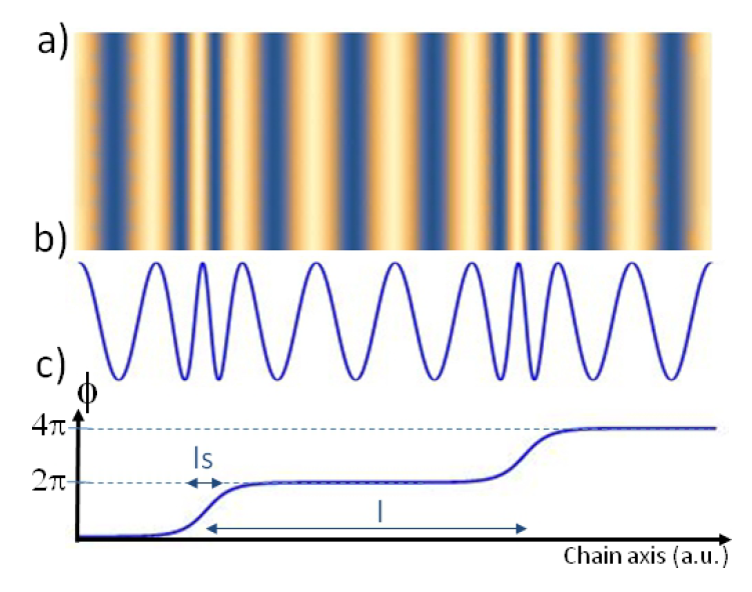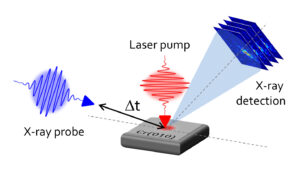Contact: David LE BOLLOC’H, Vincent JACQUES
Non-linear dynamics of incommensurate charge-density-waves under current
Charge-density-waves (CDW) mainly appear in low-dimension systèmes (which are anisotropic in terms of structure and electronic properties), like some quasi-1D crystals made of weakly coupled atomic chains or planes. They correspond to a spatial modulation of the charge density, with a well-defined wave-vector, that appears below a transition temperature Tc. When the period of this modulation is incommensurate with the atomic lattice period, non-linear transport properties can be observed, associated to the additional charges coming from the CDW that participate to the transport. This phenomenon, often called “sliding”, takes place beyond a threshold field Eth , and the current-voltage characteristic no longer follows Ohm’s law.
In the LUTECE team, we study this sliding regime by following the CDW component specifically by cutting-edge x-ray diffraction techniques available in large-scale instruments (synchrotrons and XFELs). Several regimes have been highlighted up to now, and this thematics represents an active part of the present projects, both in quasi-1D and quasi-2D systems.
Direct visualization of CDW wavefront deformation under current and surface pinning

X-ray nanodiffration techniques allow to probe sample at the local scale, with a q selectivity allowing to measure de différent periodic components of the system independantly. Thanks to x-ray diffraction data, we can distinguish between local period and orientation variations under various external stimuli. In the case of CDW systems, we can fully determine the variations of the CDW wavevector in 3D when it is submitted to external electrical current, and highlight such effects as surface pinning by the sample edges.
References: Bellec et al. PRB 2020; Bellec et al. EPJB 2020.

Soliton lattices under strong currents
When CDW systems are submitted to currents greater than the threshold current for sliding, a non-linear transport regime is observed. In the LUTECE team, we study this phase and in particular focus on the non-linear dynamics by combined transport and coherent x-ray diffraction measurements. This allowed us to evidence the generation of charge soliton lattices in this regime, ie spatially ordered additional local charges with periods reaching several micrometers. This experimental observation is corroborated by theoretical models, and is compatible with all the different transport measurements performed up to date.
References: Le Bolloc’h et al. PRL 2008; VLR Jacques et al. , PRB 2012; Rojo-Bravo et al. PRB 2016.
Out-of-equilibrium dynamics of correlated electron systems

In the LUTECE team, we study the out-of-equilibrium dynamics of correlated systems, mainly by time-resolved x-ray diffraction after femtosecond laser excitation. These experiments take place in large-scale instruments (synchrotron and XFELs). The main topics concern the study of systems close to electronic phase transitions, to understand the underlying mechanisms that lead to the formation of electronic phases. This concerns for instance :
- Spin- and Charge-density-wave out-of-equilibrium dynamics
- The transition between several CDW states in quasi-2D systems (RTe3, 1T-TaS2…)
- The dynamics close to superconducting transitions in conventional superconductors (Nb3Sn)